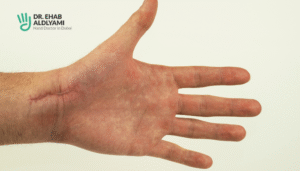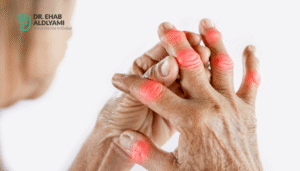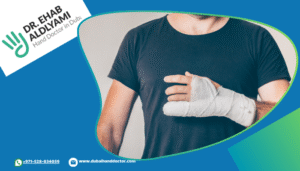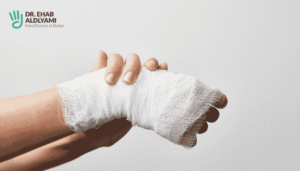
What is Mommy’s thumb, Gammer’s Thumb , Texting Thumb?
They’re all different names for the same painful condition.It’s a condition that is officially called De Quervain’s Tenosynovitis (or tendinitis).
This is a type of tendinitis in the wrist whose nickname comes from the fact that the condition is common after baby’s birth in caregivers of infants, video games and phone texting enthusiasts.
The tendinitis causes pain on the thumb side of the wrist and is worse with movement of the thumb. Activities such as opening jars, turning door knobs, and lifting children can be difficult.
Symptoms arise from De Quervain’s tendonitis when there is irritation of the tendons that extend the thumb in their surrounding sheath at the wrist. Instead of gliding smoothly through the sheath, the tendons can be swollen, irritated and painful.
Certain movements of the thumb and wrist can be excruciating. People may feel a tender cyst or bump and notice swelling in this part of the wrist near the base of the thumb. Lifting objects, gripping, or pinching with the thumb often increases symptoms. Occasionally, a popping sensation is a problem.
What causes the tendonitis?
The cause of De Quervain’s tendonitis is usually unknown, but symptoms can be brought on by starting a new activity. The condition is common in women, especially pregnant women and mothers of young children.
This type of tendonitis can be diagnosed by history and physical examination in the clinic.
Finkelstein’s test can help confirm the diagnosis. During this exam test, the patient places their thumb into their palm and wraps/clasps their fingers around the thumb. The patient then moves their wrist in the direction towards their small finger, reproducing their pain (take care, this can be very painful to do!).
What are the treatment options?
Fortunately, most people improve with time and never need surgery for De Quervain’s tendonitis.
Therefore, non-surgical treatment is tried first for most people. Treatment is aimed at reducing pain and improving function. Options can include:
Wearing a splint, which supports and immobilizes the thumb can help reduce symptoms. Off-the-shelf and custom-made braces are available.
Resting the hand by avoiding repetitive thumb motion and forceful gripping may reduce the irritation of the tendons.
Anti-inflammatory medications can reduce pain. Topical medications can be used as well.
Physiotherapist can teach stretching exercises and reduce pain with modalities such as iontophoresis treatment.
Corticosteroid injections are very effective in reducing or eliminating symptoms in many patients.
Surgery, through a very small scar to release the tendon under local anaesthesia and as a day case surgery.
Related Post

What Does It Feel Like When Your Scaphoid Is Broken
From Mild Ache to Lasting Pain – What a Scaphoid Break Really Feels Like! Wrist

Thumb CMC Joint Replacement: A Life-Changing Surgical Option
It would be hard to name an activity in daily life that is not affected

مدة علاج العظم الزورقي: كل ما تحتاج معرفته عن علاج كسر العظم الزورقي
العظم الزورقي هو أحد العظام الصغيرة الموجودة في اليد التي تقع في المعصم. بالرغم من

5 Simple Ways to Prevent Carpal Tunnel Syndrome
Small Changes, Big Relief: Prevent Carpal Tunnel Before It Starts! Experiencing tingling, numbness, or pain

اعراض وعلاج تمزق اربطة اليد
تمثل اليد أحد أكثر أجزاء الجسم استخدامًا في الحياة اليومية، مما يجعلها عرضة للإصابات

How long does it take for a hand fracture to heal?
When you experience a hand fracture, one of the first concerns is how long it




